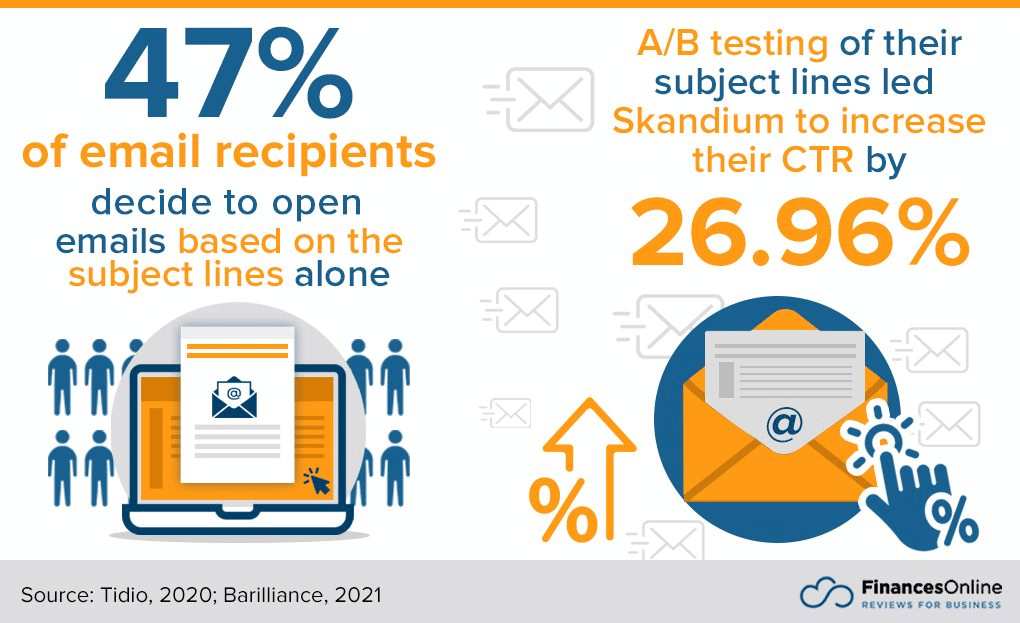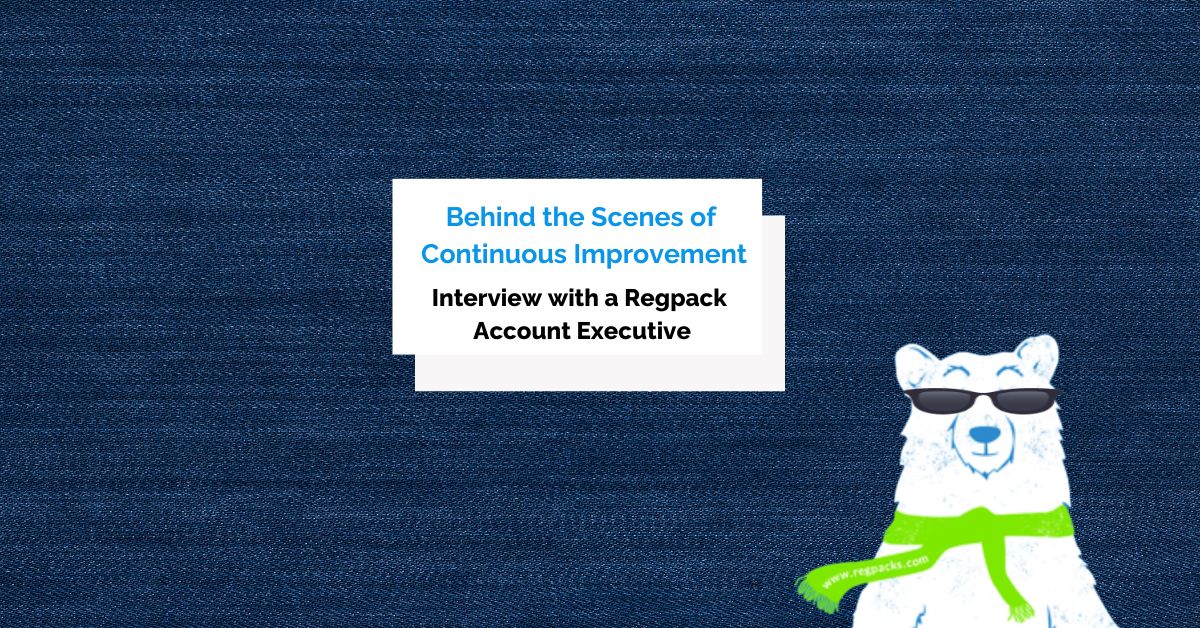It’s only natural that mistakes are made in business—the important thing is how you deal with them.
Some of those errors concern charging customers for products and services.
A customer might end up undercharged, overcharged, or charged for a different product or service than what they actually purchased.
These things happen, and it’s important to craft an incorrect payment email that will alert the customer of the error, resolve it, and express your apology.
Below we’ll walk you through the steps for creating an incorrect payment letter, as well as provide you with some templates you can use as starting points or guides as you write your own.
- Choose a Clear Subject Line
- Bring Attention to the Incorrect Payment
- Apologize for the Error
- Explain How to Correct the Error
- Offer Additional Service
- Incorrect Payment Templates You Can Use
- Conclusion
Choose a Clear Subject Line
47% of recipients choose to open the email based on the subject line alone, so it’s important to get it right, often through A/B testing.

Source: FinancesOnline
That said, clarity and specificity are essential. This way, the recipients know what the email is about and why they need to open it.
Conversely, vagueness will likely cause a customer to skip the email entirely and miss the chance to correct the payment issue.
Furthermore, vagueness makes it difficult for the customer to find the email later if they need it.
When you want to create an effective and clear subject line for incorrect payment emails, consider starting with an apology.
Then, explain that the email is about an incorrect payment. If you have the room, name the service or product the customer tried to buy.
Lastly, consider expressing a sense of urgency as well. Perhaps even use the word “Urgent” in the subject line.
This increases the chances that the customer will open the email. In fact, urgent subject lines raise the open rate by an average of 22%.
In short, having a clear subject line with easily identifiable elements can go a long way in resolving this matter quickly and painlessly, so don’t underestimate it.
Bring Attention to the Incorrect Payment
Once the recipient opens the email, they should quickly be able to figure out two things: that this is an email about an incorrect payment, and why this error occurred.
Therefore, you should start your email with a sentence acknowledging the incorrect payment error. Don’t bury the lede.
For example, if the company charged the customer for the wrong item, this needs to be made clear at the beginning of the email.
Also, state how much you over- or undercharged the customer, and provide proof such as an invoice or a contract.
Also, include any other pertinent details about the issue.
People are bound to be more accepting and forgiving if you take responsibility for the error and explain why it happened. If they can understand, they’ll be more empathetic.
Try to refrain from making your explanation sound like an excuse. You can avoid this tone by simply saying the words “this is my fault” or something along those lines.
Apologize for the Error
The most important aspect of writing an incorrect payment letter is to maintain an apologetic tone throughout.
Express your concern for how this may have negatively impacted your customer. Lines like “we hope this did not inconvenience you too badly” will help you win their forgiveness.
Even if the customer did have some part in the issue, never try to place the blame on them. This will only put them on the defensive.
They might even start thinking that you don’t care about them, which is the number one reason buyers leave a service.

Source: Visual Capitalist
Also, don’t try to chalk it up to circumstances out of your control. First, a customer likes a business that owns up to its mistakes. It shows character.
Second, a customer is more likely to trust a business that messes up sometimes in their domain of control, than one that has no control over things, like payments, which they should definitely have control over.
A small domain of control implies that things haven’t been thought through, and this comes across as unprofessional.
For example, if you hired a company to manage an outdoor event and it rained, flooding the party, you’d want the company to own that mistake and admit they should have prepared tents, not say it was bad luck.
Often, if you take the blame, the customer is likely going to say “it’s okay, we’re all human,” and then get past it.
In sum, a sincere apology for the inconvenience and issue expresses your desire to make it right and not make the same mistake again.
Explain How to Correct the Error
After describing the issue and apologizing, you should use the next part of your email to explain what your company will do, or what the customer needs to do, to correct the issue.
For example, if the customer was charged for the wrong item that was less expensive than the one they bought, the company should suggest ways the customer can pay the difference in price.
If, on the other hand, the company charged the customer for something more expensive, it should lay out how they will get the customer the money they’re owed.
Any explanation should be clear and concise, while also giving customers the option to reach out to customer service for further clarity.
Offer Additional Service
End your incorrect payment email by offering additional services, such as a discount on the customer’s next purchase or a free add-on.
Customers just love a discount:

Source: Namogoo
Offering additional services will also show that you’re not just saying you’re sorry, but that you actually mean it. As the maxim goes, actions speak louder than words.
This leaves a good impression on the recipient. They’ll close out of the email feeling that your business is sincere, generous, and responsible.
Incorrect Payment Templates You Can Use
Below are a few incorrect payment email templates, based on the above best practices, that you can use as guides when writing your own emails to customers.
Accidental Overcharge Email Template
Here’s an example of a message you can send if you accidentally charge the customer too much.
Subject Line: Urgent: Accidental overcharge on your {Service} subscription.
Good afternoon {Name},
We inadvertently overcharged you by $26 for February’s monthly {Service} subscription payment because of {Reason, e.g., a data entry error}. We sincerely apologize for any inconvenience this may have caused you, and are working to make it right.
We are refunding you the $26, and the money should appear in your account within the next 1-2 business days. Additionally, we’d like to give you the attached coupon for 40% off on your next purchase.
Please feel free to reach out to our customer service team at {Phone Number} if you have any questions.
In short, acknowledge your mistake and provide a solution, along with a clear deadline for its implementation, and include a possible means of communication in case the customer wants to discuss the matter further.
Accidental Undercharge Email Template
This is how you might want to communicate with the customer if you accidentally undercharge them, and you have to ask them to make up for the difference.
Subject Line: Please read: accidental undercharge on your monthly {service} payment.
Hi {Name},
Allow me to apologize for the accidental undercharge on your monthly {Service} invoice # {Invoice Number}.
It seems that we charged you $211 under the agreed-upon annual payment of {Cost}, as you’ll see in the contract attached below.
This is totally our fault. We had some internal technical issues. That said, to remedy the discrepancy, we sent you another e-invoice reflecting the $211. If you could handle it in the next week, we’d very much appreciate it.
We know this is an inconvenience, and therefore are offering you 20% off your next purchase. Thanks for understanding, and don’t hesitate to reach out at {Phone Number} if you have any questions.
You’ll notice that this message is somewhat more apologetic than the one announcing that you’ll be giving the money back to the client.
That tone is maintained in the directions on how to make the additional payment—they are phrased as a suggestion, rather than a direct instruction.
Conclusion
Whenever your business makes a mistake that affects a customer’s money, it’s important to take responsibility for that error, alert the customer as soon as possible, and tell them the solution.
The above best practices and templates should help you craft effective incorrect payment emails and letters that leave customers feeling cared for and informed.
If you want to automate the process, check out how Regpack, an online payments platform, enables users to set up automated emails and set your customer communications on autopilot.


















